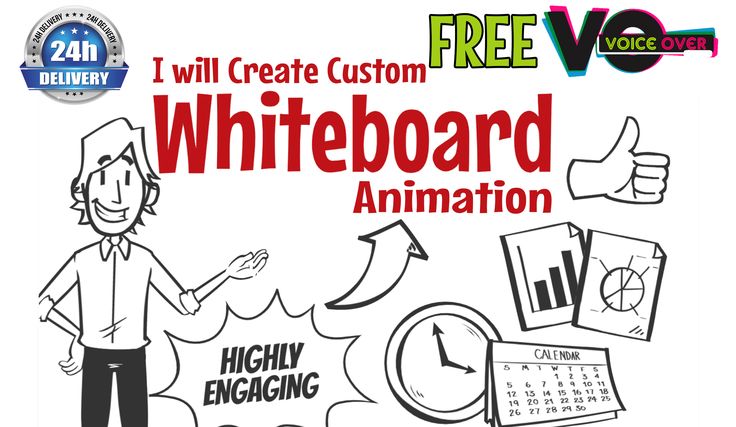
In the digital age, traditional methods of education are constantly evolving to incorporate new technologies and methodologies that engage students more effectively. One such innovation is the use of whiteboard explainer videos, a dynamic and visually stimulating tool that has proven to be highly effective in educational settings. These videos combine animation and storytelling to simplify complex concepts, making them accessible and engaging for young minds. This essay explores the impact of whiteboard explainer videos on education and how they are transforming the way children learn.
Understanding Whiteboard Explainer Videos
Whiteboard explainer videos are a type of animation where drawings are created in real-time on a whiteboard, often accompanied by a voiceover that explains the content. The combination of visual and auditory elements helps to capture the viewer’s attention and enhance understanding. The simplicity of the whiteboard animation, combined with the engaging narrative, makes it an effective educational tool.
The Science Behind Animation in Education
The use of animation in education is supported by several cognitive theories. The Dual Coding Theory, proposed by Allan Paivio, suggests that people process information better when it is presented both visually and verbally. Whiteboard explainer video leverage this by presenting information through both animated drawings and voiceovers, leading to improved retention and comprehension.
Additionally, the Cognitive Load Theory, developed by John Sweller, posits that our working memory has limited capacity. Overloading it with complex information can hinder learning. Whiteboard explainer videos help mitigate this by breaking down complex concepts into simple, digestible segments, thereby reducing cognitive load and facilitating better understanding.
Enhancing Engagement and Motivation
One of the most significant impacts of whiteboard explainer videos on education is their ability to engage and motivate students. Traditional lectures can often be monotonous, leading to disengagement and a lack of interest in the subject matter. Whiteboard explainer videos, with their dynamic and visually appealing nature, capture students’ attention and maintain their interest throughout the lesson.
The storytelling aspect of these videos also plays a crucial role in engagement. Humans are naturally drawn to stories, and when educational content is presented in a narrative format, it becomes more relatable and memorable. This storytelling approach, combined with the visual appeal of the animations, makes learning more enjoyable and less of a chore for students.
Simplifying Complex Concepts
One of the challenges in education is conveying complex concepts in a way that is easy to understand. Whiteboard explainer videos excel in this area by using simple drawings and step-by-step explanations to break down intricate topics. For instance, in a science lesson about the water cycle, a whiteboard explainer video can visually depict each stage—evaporation, condensation, precipitation, and collection—while the voiceover explains the process in simple terms. This dual approach helps students grasp the concept more easily than through text alone.
Improving Retention and Recall
Retention and recall are critical components of effective learning. Whiteboard explainer videos enhance these by engaging multiple senses. When students see the animated drawings and hear the accompanying explanations, they are more likely to remember the information. Studies have shown that visual aids can improve learning by up to 400%, highlighting the importance of incorporating visuals in education.
Furthermore, the repetitive nature of the animations, where key points are often revisited and emphasized, reinforces learning and aids in long-term retention. This is particularly beneficial in subjects that require the memorization of facts and figures, such as history or mathematics.
Catering to Different Learning Styles
Every student has a unique learning style. Some are visual learners, others are auditory learners, and some learn best through reading or hands-on activities. Whiteboard explainer videos cater to multiple learning styles simultaneously, making them an inclusive educational tool. Visual learners benefit from the animated drawings, auditory learners gain from the voiceovers, and those who learn through repetition and storytelling find the videos engaging and effective.
Encouraging Active Learning
Active learning involves students engaging with the material, participating in the learning process, and thinking critically about the content. Whiteboard explainer videos encourage active learning by prompting students to think about what they are watching and listening to. Teachers can pause the video at key points to ask questions, facilitate discussions, or conduct quick assessments. This interactive approach ensures that students are not passive recipients of information but are actively involved in their learning.
Bridging the Gap Between Home and Classroom Learning
The COVID-19 pandemic highlighted the importance of flexible and remote learning solutions. Whiteboard explainer videos can be easily shared and accessed online, making them an excellent resource for both classroom and home learning. They provide consistency in education, ensuring that students can continue learning regardless of their location.
Parents can also use these videos to support their children’s learning at home. The simplicity and clarity of whiteboard explainer videos make it easier for parents to understand and explain concepts to their children, fostering a collaborative learning environment.
Fostering Creativity and Imagination
Beyond their educational benefits, whiteboard explainer videos also foster creativity and imagination. Watching ideas and concepts come to life through animation can inspire students to think creatively and explore their own ideas. It encourages them to visualize information in unique ways and can even spark an interest in animation and digital storytelling.
Conclusion
Whiteboard explainer videos are revolutionizing education by making learning more engaging, accessible, and effective. By combining visual and auditory elements, simplifying complex concepts, and catering to different learning styles, these videos enhance student engagement and motivation. They also improve retention and recall, encourage active learning, and provide a flexible learning solution that bridges the gap between home and classroom education.
As technology continues to advance, the role of animation in education will likely expand, offering even more innovative ways to engage young minds. For now, whiteboard explainer videos stand out as a powerful tool that brings education to life, making learning an enjoyable and enriching experience for students.



